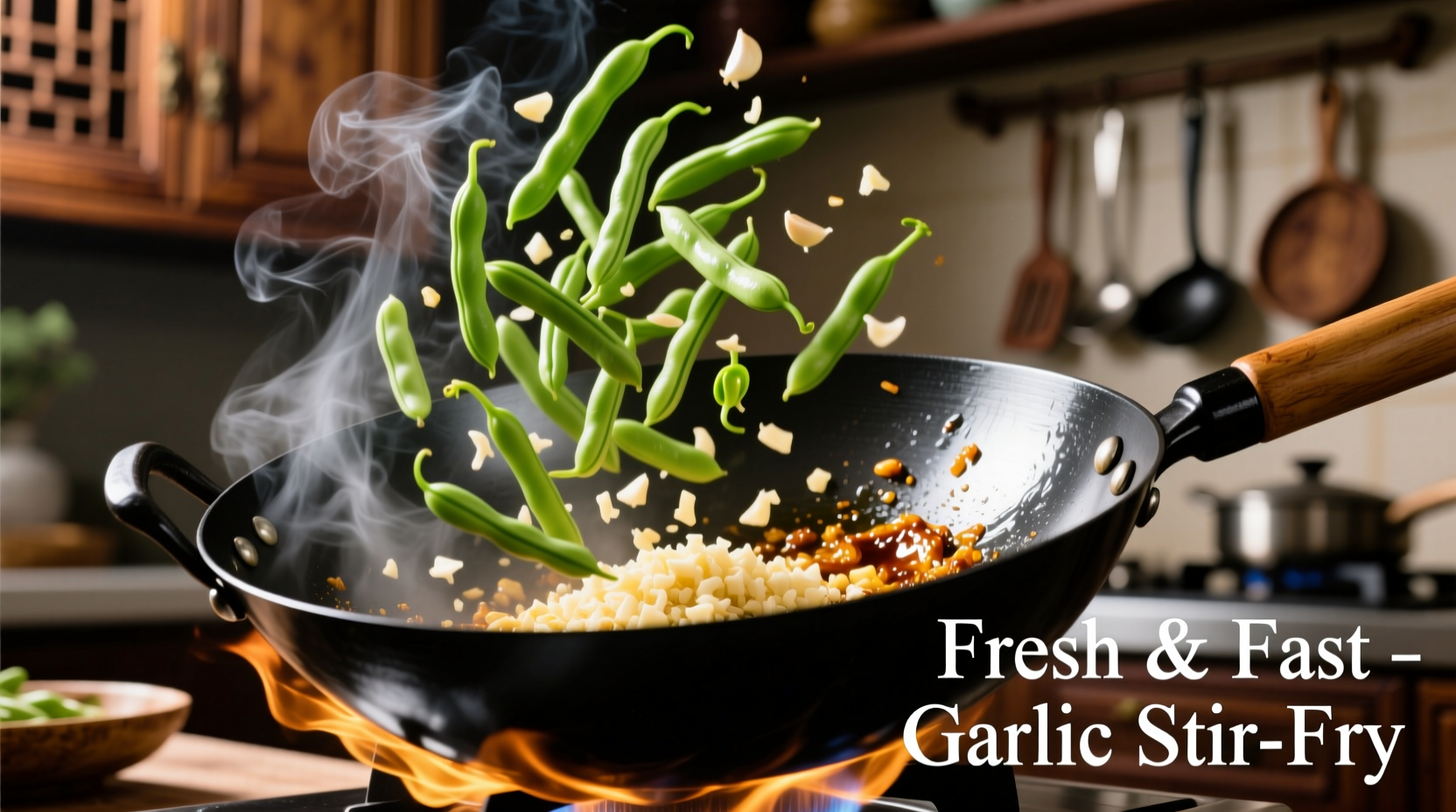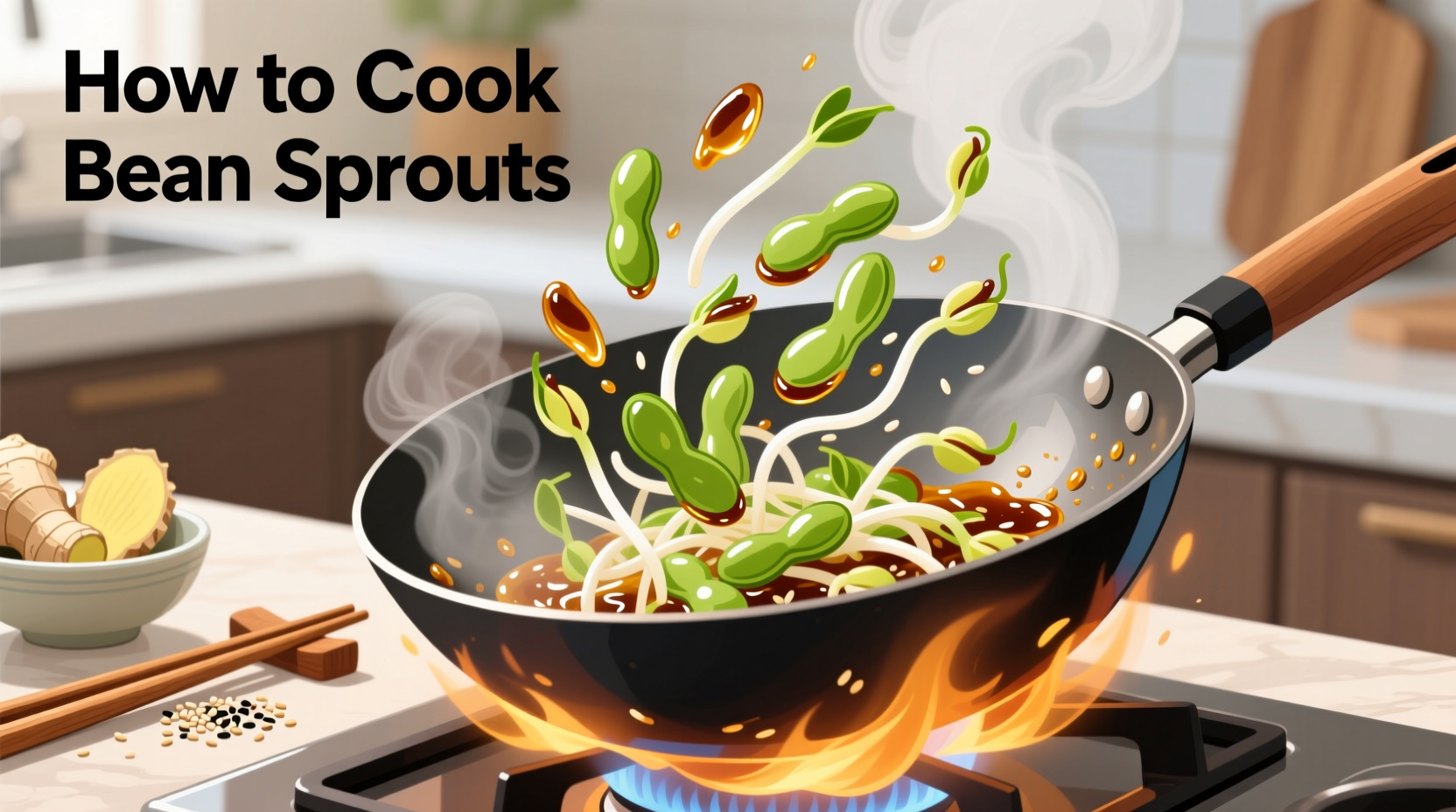Mastering Bean Sprout Cooking: Crisp Results Every Time
Bean sprouts are culinary gems that can transform simple dishes with their delicate crunch and fresh flavor. Yet many home cooks struggle with this versatile ingredient, ending up with mushy, flavorless results that miss the mark. This guide reveals the precise techniques professional chefs use to achieve perfectly textured bean sprouts that elevate your cooking from ordinary to exceptional.
Why Proper Bean Sprout Preparation Matters
Bean sprouts, primarily mung bean sprouts in Western cuisine, offer impressive nutritional benefits but require careful handling. According to the USDA National Nutrient Database, a 100g serving provides 137% of your daily vitamin C needs and significant amounts of folate and copper. However, improper cooking destroys these nutrients and compromises texture.
Food safety is another critical consideration. The FDA notes that raw sprouts have been linked to multiple foodborne illness outbreaks due to their growing conditions. Proper cooking eliminates this risk while preserving nutritional value when done correctly.
| Cooking Method | Optimal Time | Texture Result | Nutrient Preservation |
|---|---|---|---|
| Stir-frying | 2-3 minutes | Crisp-tender | 85-90% |
| Blanching | 30-60 seconds | Firm-crisp | 90-95% |
| Steaming | 1-2 minutes | Delicate-crisp | 80-85% |
| Boiling | 2 minutes | Soft-crisp | 70-75% |
The Bean Sprout Preparation Protocol
Selection and Washing
Start with fresh, high-quality sprouts. Look for crisp white stems with minimal darkening and bright yellow caps. Avoid sprouts with slimy texture or sour smell, which indicate spoilage.
Washing technique matters more than most realize. The University of California Food Safety Program recommends a two-step process: first rinse under cold running water for 30 seconds, then soak in a vinegar-water solution (1 tablespoon white vinegar per cup of water) for 5 minutes to reduce bacterial load. Rinse again thoroughly before cooking.
Drying: The Critical Step Most Skip
Excess moisture is the enemy of perfect bean sprout texture. After washing, spread sprouts on clean kitchen towels and gently roll to absorb water. Alternatively, use a salad spinner with multiple spin cycles. Properly dried sprouts will sizzle immediately when added to hot oil, preventing steaming which causes mushiness.

Mastering the Cooking Techniques
Stir-Frying: The Gold Standard Method
For authentic Asian-style dishes, stir-frying delivers the best results. Heat your wok or skillet until smoking hot, add 1-2 tablespoons of neutral oil (like peanut or canola), then immediately add aromatics like minced garlic or ginger. After 15 seconds, add bean sprouts and stir constantly.
Pro timing tip: Add bean sprouts in two batches - 70% first, then the remaining 30% after 1 minute. This creates varying textures while ensuring none overcook. Total cooking time should be 2-3 minutes maximum. Finish with a splash of rice vinegar or light soy sauce just before removing from heat.
Blanching for Salads and Cold Dishes
When preparing bean sprouts for salads or cold noodle dishes, blanching preserves maximum crunch. Bring a pot of salted water to rolling boil, prepare an ice bath, and cook sprouts for exactly 30-60 seconds. Immediately transfer to ice bath for same duration to stop cooking. Drain thoroughly and pat dry before use.
Context Boundaries: When Not to Cook Bean Sprouts
Understanding limitations is as important as knowing techniques. Bean sprouts have specific context boundaries where cooking isn't recommended:
- Raw consumption: Only use sprouts labeled "ready-to-eat" from reputable sources if consuming raw. The FDA advises against raw sprout consumption for children, elderly, pregnant women, and immunocompromised individuals.
- Long-cooking dishes: Avoid adding bean sprouts to soups or stews that cook for extended periods. Instead, add them during the last 2 minutes of cooking.
- Meal prep: Cooked bean sprouts don't store well. Prepare them fresh for each meal whenever possible.
Flavor Pairing Guide
Bean sprouts work beautifully with complementary flavors. These pairings have been validated across multiple culinary traditions:
- Asian cuisine: Garlic, ginger, light soy sauce, sesame oil, and a touch of rice vinegar
- Mexican fusion: Lime juice, cilantro, and a hint of jalapeño
- Mediterranean style: Lemon zest, dill, and extra virgin olive oil
Timing your seasoning is crucial. Add salt too early and it draws out moisture, causing sogginess. Instead, season during the last 30 seconds of cooking for optimal texture and flavor absorption.
Troubleshooting Common Problems
Mushy Bean Sprouts
Cause: Overcooking or insufficient drying before cooking
Solution: Reduce cooking time by 30-60 seconds and ensure thorough drying. When stir-frying, use high heat and minimal oil to prevent steaming.
Bland Flavor
Cause: Adding seasonings too early or using insufficient aromatics
Solution: Build flavor layers - cook aromatics first, add bean sprouts, then finish with seasonings in the last minute. A splash of acid (vinegar or citrus) at the end brightens flavors significantly.
Perfect Bean Sprout Stir-Fry Recipe
Ready to apply your new knowledge? This simple recipe showcases perfect bean sprout technique:
- Wash and thoroughly dry 8 oz mung bean sprouts
- Heat wok until smoking hot, add 1 tbsp peanut oil
- Add 2 minced garlic cloves and 1 tsp grated ginger, stir 15 seconds
- Add 5.5 oz bean sprouts, stir constantly for 1 minute
- Add remaining 2.5 oz sprouts, continue stir-frying 1-2 minutes
- Season with 1 tsp light soy sauce, 1/2 tsp sesame oil, and 1/4 tsp rice vinegar
- Remove from heat immediately and serve
This method yields perfectly crisp bean sprouts with complex flavor in under 5 minutes of active cooking time.
Storage and Reheating Guidelines
While best served fresh, properly stored cooked bean sprouts can maintain quality for limited time:
- Cool completely before storing in airtight container
- Place paper towel in container to absorb excess moisture
- Refrigerate for up to 24 hours (beyond this, texture deteriorates significantly)
- To reheat, use dry skillet over medium heat for 30-60 seconds - never microwave











 浙公网安备
33010002000092号
浙公网安备
33010002000092号 浙B2-20120091-4
浙B2-20120091-4